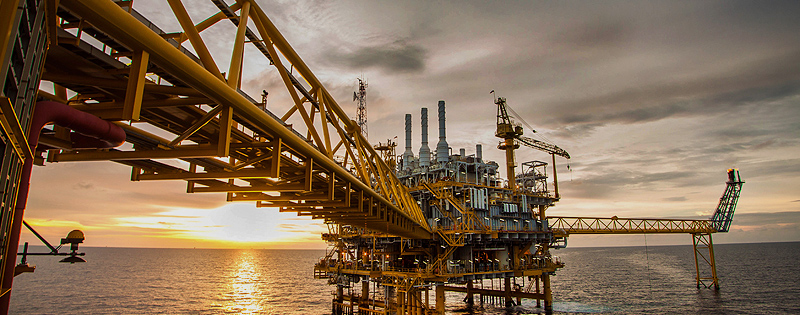Embark on a journey of nuclear innovation with Mechvac Technologies Pvt Ltd’s vacuum pump solutions, meticulously engineered and manufactured in India. Our vacuum pumps are tailored to meet the stringent demands of the atomic energy industry, offering superior performance, reliability, and safety. From nuclear reactors to research facilities, our vacuum pumps play a vital role in advancing nuclear technology, ensuring efficiency, sustainability, and safety in atomic energy applications.
Key Applications of Vacuum Pumps in the Atomic Energy Industry
1. Nuclear Reactor Cooling and Maintenance
- Primary and Secondary Cooling Systems: Vacuum pumps are used in the cooling systems of nuclear reactors to remove non-condensable gases from the coolant and maintain the efficiency of heat transfer processes. These pumps help in maintaining the vacuum conditions required for the efficient operation of condensers and cooling towers, which are critical for dissipating heat generated during nuclear fission. By ensuring the removal of gases that can form bubbles and impede heat transfer, vacuum pumps enhance the overall safety and efficiency of the reactor cooling systems.
- Reactor Pressure Vessel Maintenance: Vacuum pumps are employed in the maintenance of reactor pressure vessels to create a vacuum environment for inspecting and repairing internal components. This allows for a controlled and safe environment to perform maintenance tasks, such as removing debris and conducting detailed inspections, without exposing workers to radiation. Vacuum-assisted maintenance helps in extending the lifespan of reactor components and ensuring the continued safe operation of nuclear reactors.
2. Fuel Handling and Reprocessing
- Spent Fuel Handling: Vacuum pumps are used in the handling and processing of spent nuclear fuel to create a vacuum environment that prevents the release of radioactive gases and contaminants. These pumps are essential for maintaining a controlled atmosphere during the transfer and storage of spent fuel, reducing the risk of radiation exposure and contamination. Vacuum technology helps in safely managing spent fuel, preparing it for reprocessing or disposal.
- Fuel Reprocessing: In the reprocessing of nuclear fuel, vacuum pumps are used to create the necessary conditions for separating and recovering fissile materials, such as uranium and plutonium, from spent fuel. Vacuum distillation and sublimation processes require a vacuum environment to effectively separate these materials based on their boiling points and vapor pressures. This enables the recovery of valuable nuclear materials for reuse in reactors, reducing waste and enhancing the sustainability of nuclear energy.
3. Tritium Recovery and Handling
- Tritium Extraction: Vacuum pumps are crucial in the extraction and recovery of tritium, a radioactive isotope of hydrogen used in nuclear fusion research and certain types of nuclear reactors. Tritium is often extracted from heavy water (deuterium oxide) used in reactors, and vacuum pumps are used to create the low-pressure conditions necessary for its separation and collection. Efficient tritium recovery is important for reducing radioactive waste and supporting fusion energy research.
- Handling and Storage: Vacuum pumps are also used in the handling and storage of tritium to maintain a vacuum environment that minimizes the risk of leaks and contamination. This is essential for ensuring the safe handling of tritium, which is highly volatile and can pose significant radiation hazards. Vacuum technology helps in maintaining containment and preventing the release of tritium into the environment.
4. Vacuum Chambers for Research and Development
- Fusion Research: Vacuum pumps are integral to fusion research, where they are used to create and maintain ultra-high vacuum conditions within fusion reactors, such as tokamaks. These conditions are necessary to contain the high-temperature plasma and prevent contamination from external gases. Vacuum pumps help in achieving the low pressures required for fusion reactions to occur, enabling researchers to study and develop viable fusion energy technologies.
- Material Testing and Development: In the development of materials for use in nuclear reactors, vacuum pumps are used in testing chambers to simulate the vacuum and radiation conditions that materials will encounter. This includes testing the durability, thermal resistance, and radiation tolerance of materials, ensuring that they can withstand the harsh environments of nuclear reactors. Vacuum-assisted material testing is crucial for developing safer and more efficient nuclear reactor components.
5. Isotope Production and Purification
- Radioisotope Production: Vacuum pumps are used in the production of radioisotopes, which are used in medical, industrial, and research applications. These pumps create the vacuum conditions necessary for processes such as gas-phase reactions and vapor deposition, where isotopes are generated and separated. Vacuum technology helps in producing high-purity radioisotopes efficiently and safely, supporting a wide range of scientific and medical applications.
- Isotope Separation: In the purification of isotopes, vacuum pumps are used to facilitate isotope separation processes, such as gas centrifugation and thermal diffusion. These processes require a vacuum to separate isotopes based on their mass and physical properties, enabling the production of isotopes with high levels of purity. Vacuum-assisted isotope separation is essential for applications in nuclear medicine, research, and energy production.
6. Radioactive Waste Management
- Waste Solidification and Encapsulation: Vacuum pumps are used in the solidification and encapsulation of radioactive waste to remove moisture and gases from the waste material. This process helps in reducing the volume of the waste and preventing the release of radioactive gases, ensuring safe and stable storage. Vacuum-assisted waste solidification improves the long-term containment and management of radioactive waste, reducing the risk of environmental contamination.
- Decontamination and Decommissioning: In the decontamination and decommissioning of nuclear facilities, vacuum pumps are used to create a vacuum environment for the safe removal and containment of radioactive materials. This includes vacuum cleaning systems that remove radioactive dust and debris from surfaces and equipment, reducing the risk of radiation exposure during the dismantling of nuclear facilities. Vacuum technology plays a key role in safely decommissioning nuclear plants and reducing the environmental impact of radioactive contamination.
7. Gas Purification and Handling
- Helium Recovery: In nuclear facilities, helium is used as a coolant and in gas-cooled reactors. Vacuum pumps are used in helium recovery systems to create a vacuum that facilitates the collection and purification of helium gas. This helps in reducing the consumption of helium, which is a valuable and finite resource, and ensures the efficient operation of gas-cooled reactors. Vacuum-assisted helium recovery is important for the sustainability and cost-effectiveness of nuclear energy.
- Gas Purification: Vacuum pumps are used in gas purification systems to remove impurities from gases used in nuclear processes, such as argon, xenon, and krypton. These gases are often used in radiation detection and shielding, and their purity is critical for effective operation. Vacuum technology helps in achieving high levels of gas purity, enhancing the performance and reliability of nuclear detection and shielding systems.
8. Leak Detection and Monitoring
- Leak Testing of Containment Systems: Vacuum pumps are used in leak detection systems to test the integrity of containment structures, such as reactor vessels and storage tanks. By creating a vacuum within the structure, any leaks can be detected by measuring changes in pressure or the presence of tracer gases. Regular leak testing with vacuum technology is essential for ensuring the safety and containment of radioactive materials, preventing environmental contamination and exposure.
- Monitoring and Maintenance: Vacuum pumps are also used in monitoring systems to continuously check for leaks and pressure changes in nuclear facilities. These systems help in early detection of potential issues, allowing for timely maintenance and repairs. Vacuum-assisted monitoring helps in maintaining the safety and operational efficiency of nuclear facilities, reducing the risk of accidents and radioactive releases.
9. Cryogenics and Low-Temperature Applications
- Cryogenic Cooling: In nuclear research and medical applications, vacuum pumps are used in cryogenic systems to achieve and maintain the low temperatures required for the storage and transportation of liquefied gases, such as liquid nitrogen and liquid helium. These gases are used in various applications, including the cooling of superconducting magnets in nuclear magnetic resonance (NMR) and positron emission tomography (PET) scanners. Vacuum technology helps in achieving the necessary cryogenic conditions, ensuring the safe and efficient use of liquefied gases.
- Low-Temperature Experiments: Vacuum pumps are also used in low-temperature experiments in nuclear research, where they help create and maintain vacuum conditions that reduce the boiling points of liquids and allow for experiments at extremely low temperatures. These experiments are crucial for studying the behavior of materials and reactions under low-temperature conditions, providing valuable insights for the development of nuclear technologies.
10. Radiation Detection and Shielding
- Radiation Detection Systems: Vacuum pumps are used in radiation detection systems to create vacuum conditions that enhance the sensitivity and accuracy of detectors. This includes systems such as gas ionization detectors and Geiger-Müller tubes, which rely on a vacuum to detect and measure radiation levels accurately. Vacuum-assisted radiation detection is essential for monitoring radiation in nuclear facilities, ensuring the safety of personnel and the environment.
- Shielding Material Testing: Vacuum pumps are used in the testing of shielding materials to assess their effectiveness in blocking or reducing radiation. By creating a vacuum environment, researchers can simulate radiation exposure and measure the performance of different shielding materials. This testing helps in developing effective radiation shielding solutions for nuclear reactors, medical facilities, and other applications where radiation protection is critical.
The MT Series is an excellent choice atomic energy industry, offering a range of benefits that can greatly enhance your atomic energy industry operations:
MT Series benefits: –
Reduce Energy Consumption: The MT Series is designed with energy efficiency in mind, helping to reduce energy consumption during operation. By minimizing energy usage, you can lower your utility costs and contribute to sustainability efforts.
Save on Maintenance Costs: With its robust construction and reliable performance, the MT Series requires minimal maintenance compared to other vacuum pumps. This helps you save on maintenance costs while ensuring consistent operation and longevity of the equipment.
Maximize Operational Reliability: The MT Series is known for its exceptional reliability and durability, providing uninterrupted operation even in demanding packaging environments. With dependable performance, you can minimize downtime and maintain productivity levels.
Increase Production Output: By streamlining the vacuum packaging process and optimizing efficiency, the MT Series helps increase production output. Its high-performance capabilities enable faster evacuation of air from packaging, allowing you to meet higher production demands.
Protect the Environment: The MT Series is designed with environmental sustainability in mind. Its energy-efficient operation and reduced maintenance requirements contribute to lower carbon emissions and environmental impact. By choosing the MT Series, you’re taking proactive steps towards protecting the environment.
MT Series images





